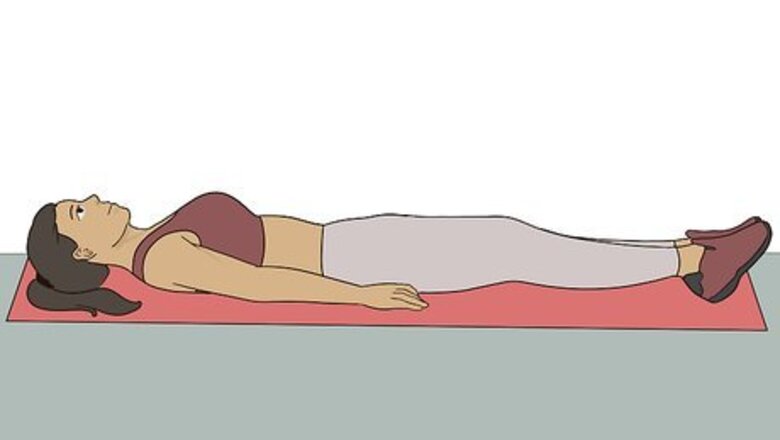
views
Assuming the Correct Position
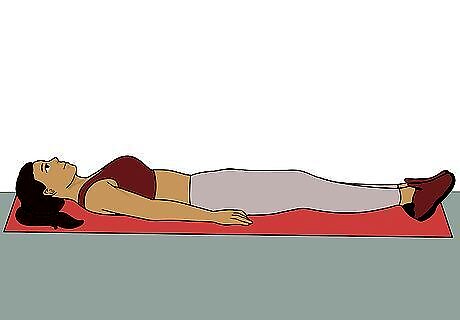
Lie flat on your back on the ground. Start the exercise by lying down, extending your legs, and pointing your toes upward to form a straight line with your body. Relax your shoulders and neck and find a comfortable position. Use a yoga mat, a towel, or work on a carpeted or padded floor to make the exercise more comfortable.

Fold your hands and place them behind your neck. Interlace or stack your fingers and place them behind your neck to help support your head during the exercise. Your hands should rest comfortably behind your neck and shouldn’t pull on your head. Don’t round your neck and spine. If you have shoulder flexibility or mobility issues, you can place your fingertips on the sides of your head.
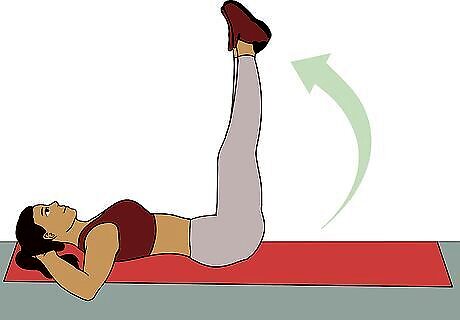
Raise both of your legs so they’re perpendicular to the ground. Keep your legs together and extend them so they’re straight. You can bend your knees slightly if your flexibility doesn’t allow you to keep them straight, but work to straighten your legs out over time. Try doing yoga to stretch your hamstrings to improve the flexibility of your legs. You can cross your ankles if it makes it more comfortable for you.Tip: Avoid rounding your back by keeping your lower spine flat on the ground.
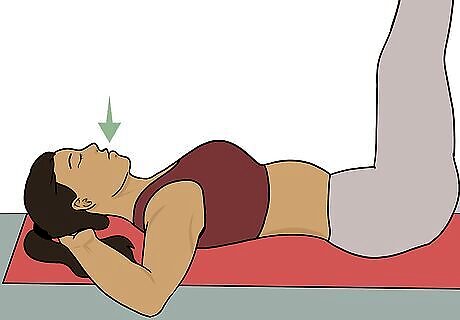
Contract your core to prepare for the movement. Once you’re in a good position with your legs elevated, take a breath and brace your core for the movement by contracting and keeping it tight. Keep your back fully connected to the ground. There should not be any space between your lower back and the ground.
Performing the Movement
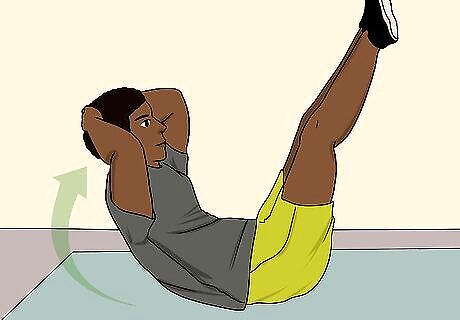
Curl your upper body to lift your shoulders off of the ground. Engage your abdominal muscles to raise your upper body off of the ground, stretching toward your feet. Imagine lifting your chest to the sky so you don’t round your shoulders and spine. Exhale as you contract your abdominal muscles and raise your shoulders.Tip: Don’t lead the motion with your head by pulling on your neck. Use your core muscles to curl your body upward and keep your chin in line with your chest.
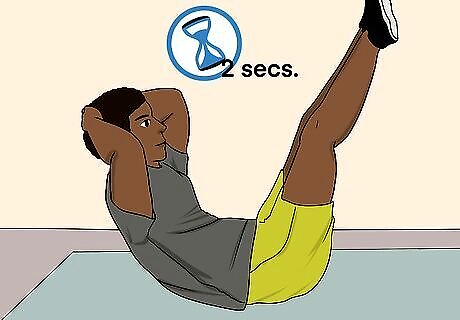
Hold the position for 2 seconds. Stop moving upwards when you feel your shoulders start to hunch forward, and hold the crunch for 2 seconds to fully engage your core. Keep your elevated and be careful not to pull on your neck or extend your chin to avoid straining your neck. Keep your legs straight and pointed upward and keep them from moving while you hold the crunch.
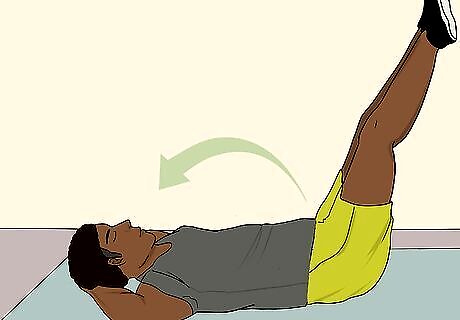
Lower your upper body slowly. After 2 seconds, slowly return back down to the starting position with control, keeping your abdominal muscles contracted. Imagine lowering back down one vertebra at a time in a smooth and fluid motion. Try to keep your legs from moving or swaying while you lower your shoulders back to the ground. Do not slam on the ground or fall backward or you could injure yourself. Keep your legs elevated in the starting position after you’ve lowered back down to the grown.
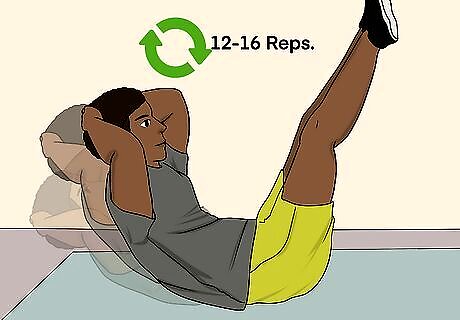
Repeat the movement for 12 to 16 repetitions. To get a good abdominal workout using vertical leg crunches, you need to do at least 12 reps. Remember to exhale as you crunch and take a breath when you return to the starting position. It’s okay to take a break and lower your legs before finishing up your reps.
Intensifying the Exercise
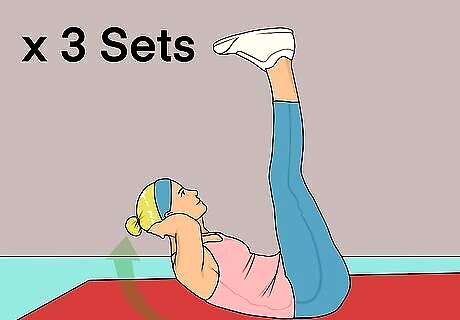
Do 3 sets of 15 repetitions. To really challenge yourself with a difficult routine, do 3 sets of 15 vertical leg crunches, with a brief pause in between sets to keep your muscles working. The shorter the rest period in between sets, the more difficult of a challenge the workout is for your core. Add other abdominal exercises to this routine to make the workout even more intense. Use good technique throughout the whole workout; don’t let your form break down as you get tired. Take a rest if you need to, then return to the movement using good technique.

Extend your arms to increase the difficulty. Instead of supporting your head with your hands, extend your arms and reach toward your toes when you perform the crunch. Reach as far as you can and hold at the top of the movement for 2 seconds before you slowly lower back down to the ground. Reach as far as you can without rounding your shoulders and upper back.
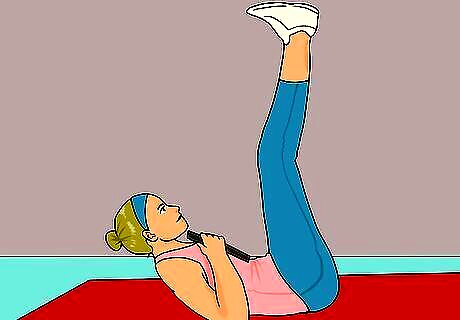
Hold a weight on your chest or behind your head. To really ramp up the difficulty of the vertical leg crunch, hold a rounded weight plate against your chest or behind your head when you perform the movement. Use good form and hold at the top of the movement for 2 seconds before you lower back down with control.Warning: When using weights, it’s really important that you lower back down slowly and with control to avoid injury.














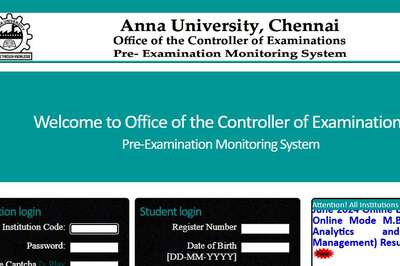





Comments
0 comment